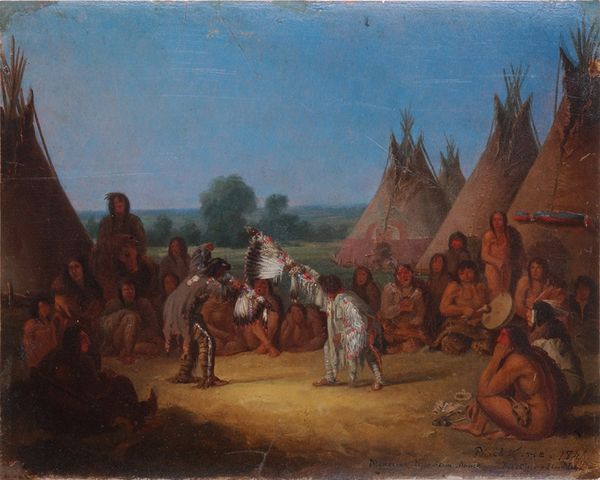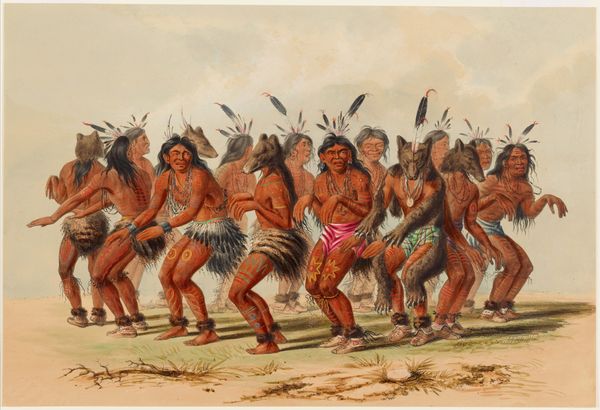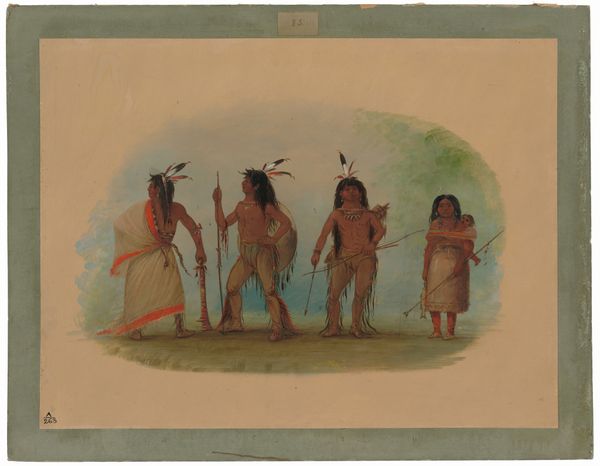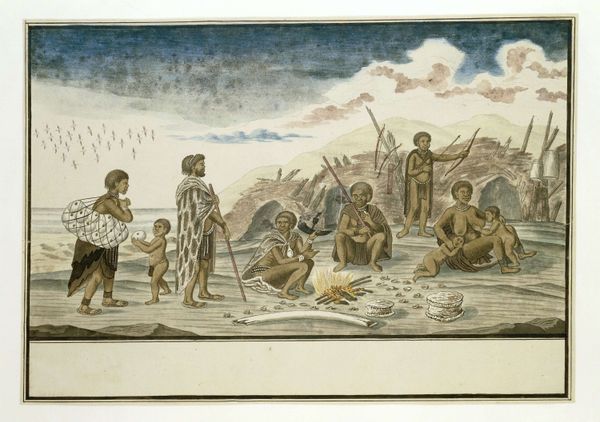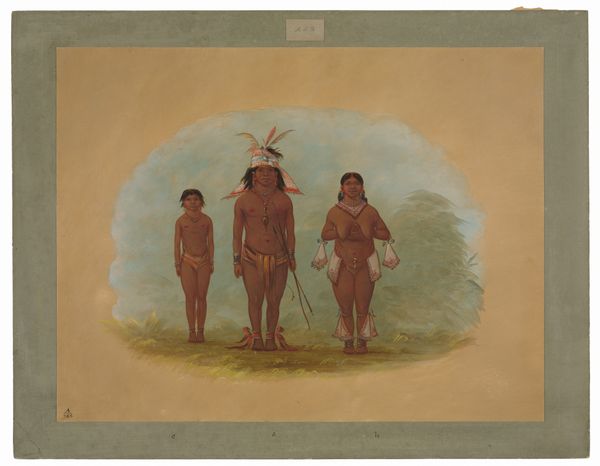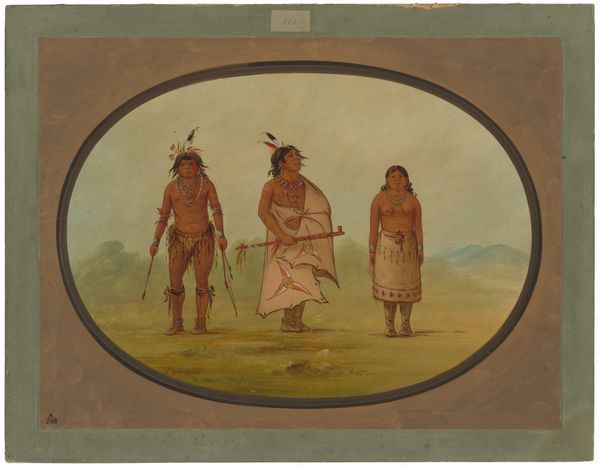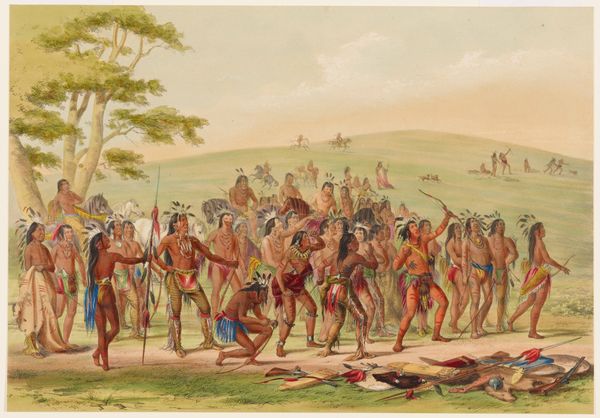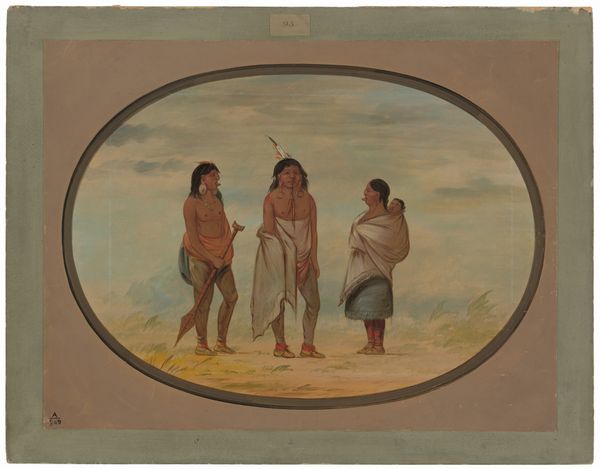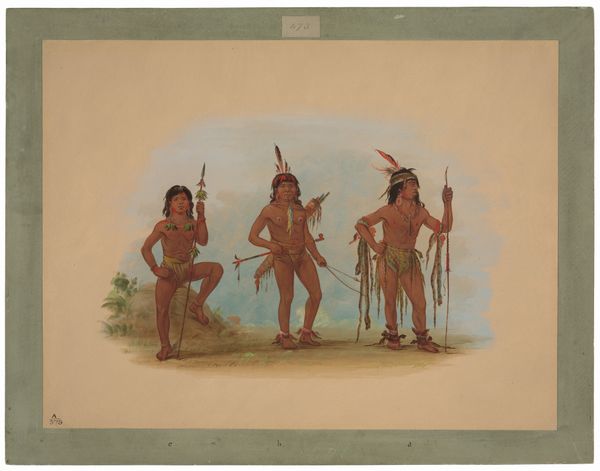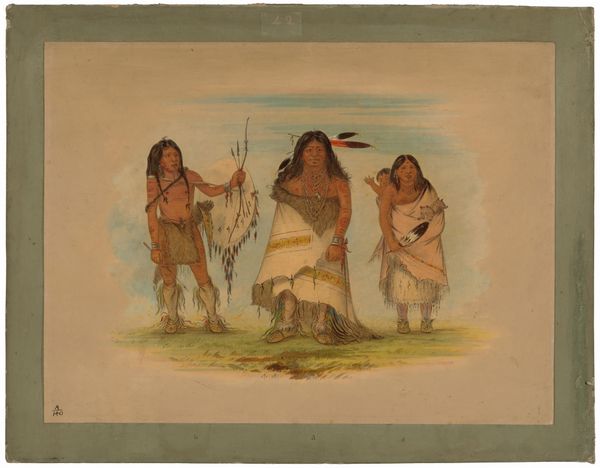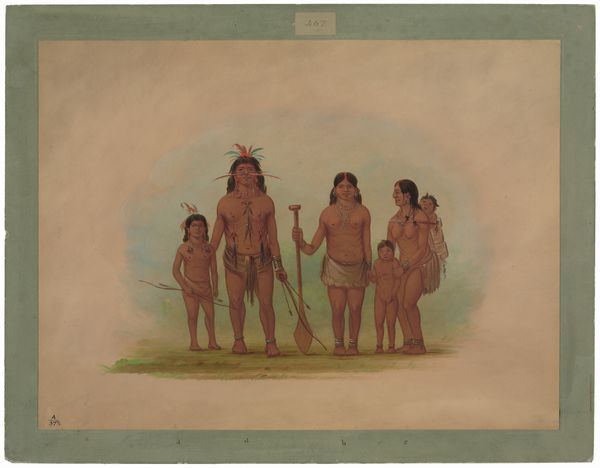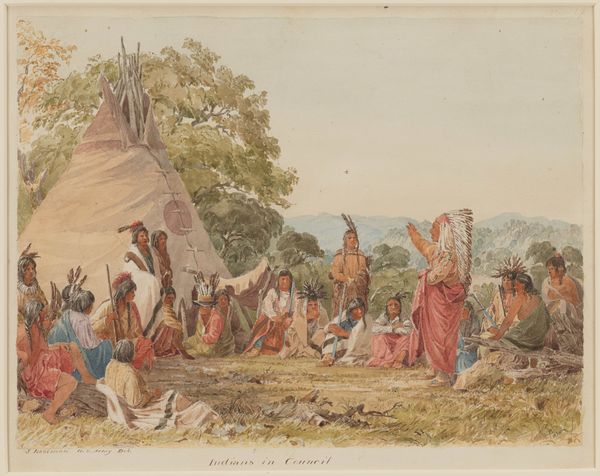
painting, oil-paint
#
painting
#
oil-paint
#
oil painting
#
genre-painting
#
watercolor
Copyright: Public domain
Editor: So this is "Chualpays Jouant a Lalcoloh" by Paul Kane. From what I gather, it's an oil painting and it portrays a group of Indigenous people in a landscape. I’m struck by how the artist arranges the figures to draw our eye to the game they're playing. What else stands out to you? Curator: I find myself drawn to the distribution of light. Note the way Kane uses light to model the figures, focusing on the smooth transitions. Consider, also, the landscape. Do you notice anything in the interplay between the shapes that creates a flattening of space? Editor: Yes, the background does seem to lack depth; almost as if it’s a backdrop to the activity in the foreground. Why do you think Kane made that choice? Curator: One might argue that this flattening serves to highlight the immediacy of the scene. The eye is directed immediately to the forms in the foreground, in other words, Kane wishes us to be situated, firmly and without any distraction of depth, in the foreground. Further, you may consider, to what extent does that color in the foreground further create this depthlessness? Editor: The color palette is quite earthy and muted, that definitely contributes to that flat appearance. It's interesting how the formal elements create such a focused viewing experience. Curator: Precisely. By focusing on the relationships between the painted objects—the colors, forms, and distribution of light, we are made aware of the picture plane, which is not trying to disappear under an illusion of reality. Editor: That's fascinating. I’m beginning to see how studying the forms themselves can open up new ways of understanding the artwork. Curator: Indeed. A painting has its own grammar that we, as viewers, need to decode to better understand it.
Comments
No comments
Be the first to comment and join the conversation on the ultimate creative platform.
